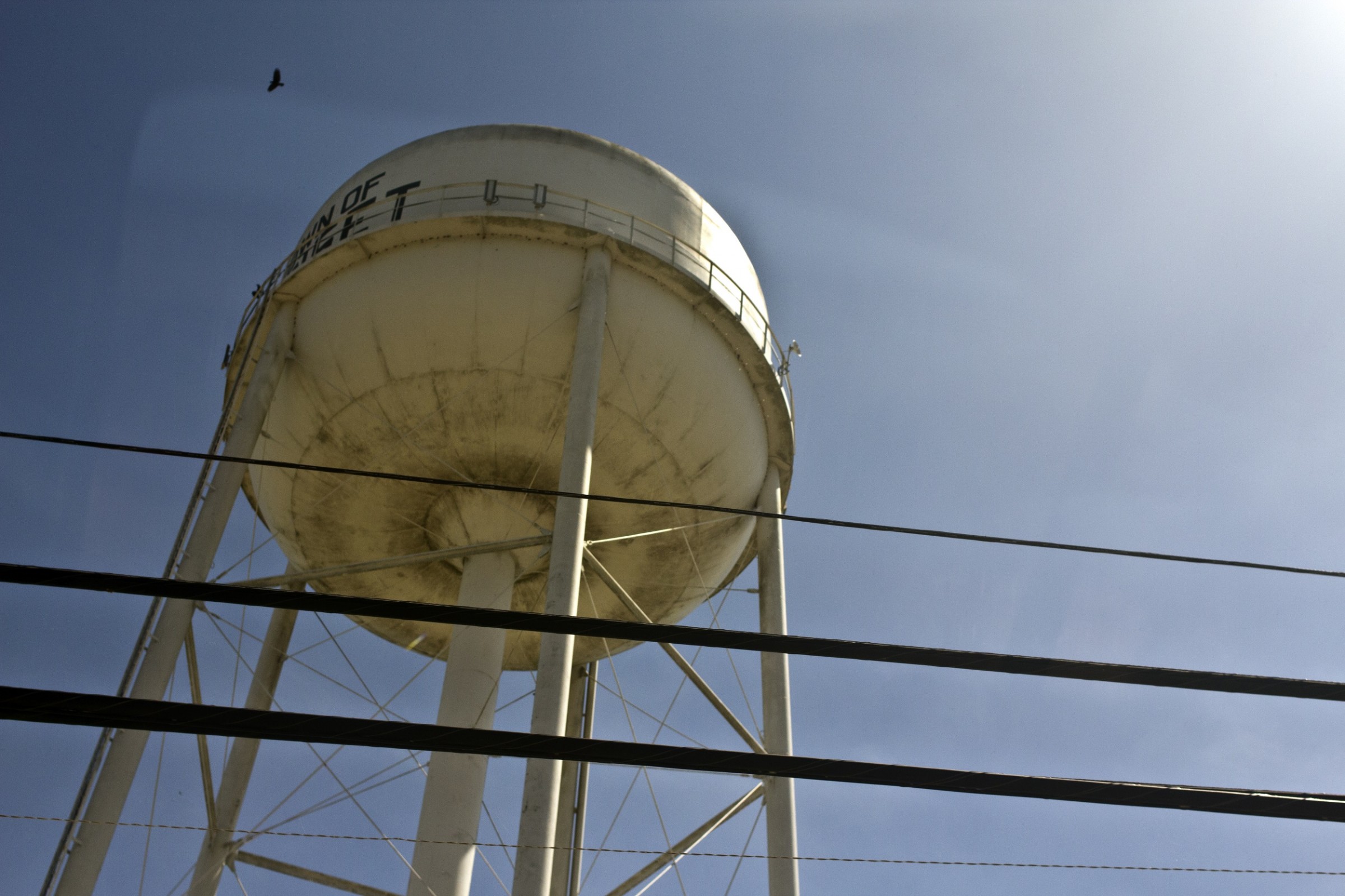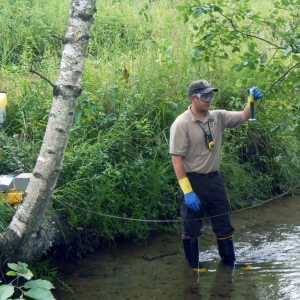Move aims for transparency and to identify struggling water systems.

The water tower in Sunset, Louisiana. The town’s water system received a D grade in the state’s first report card. Photo courtesy of Patrick under Creative Commons license BY-NC-SA 2.0
By Brett Walton, Circle of Blue – May 11, 2023
In an effort to improve public communication, the Louisiana Department of Health published its inaugural water system report cards last week, becoming the first state in the country to use annual letter grades to highlight the failures and successes of drinking water utilities.
Water systems are already required by federal law to send an annual Consumer Confidence Report to customers with details about drinking water contaminants. The Louisiana Department of Health grading system, which was mandated by a 2021 state law, goes several steps further, combining a range of measurements into a single letter grade for each of the state’s 951 community water systems.
On top of water quality, the grade incorporates data on utility finances, operations, and customer complaints. Utilities must include the grade on annual reports sent to customers.
Forty-one percent of water systems earned an A grade. Six percent received a D, and nine percent failed. Many of the failing systems serve small, rural communities, which often have fewer financial and technical resources.
Amanda Ames, chief engineer at the Department of Health, led the development of the grading system.
“It provides for accountability and for transparency,” Ames said. The public gets an easy-to-understand snapshot of their water provider, she said, while state agencies receive an overview of water utility conditions.
Though many states collect the same data that informs the Louisiana grades, a drinking water report card is a new step. But is it worthwhile to take it?
Manny Teodoro, who studies public policy and consults with water utilities, said that a report card makes intuitive sense. School systems use them. Health departments assign letter grades (or smiley faces) to restaurants based on their cleanliness. The American Society of Civil Engineers publishes an annual report card on the nation’s infrastructure. In the 2021 report card, drinking water systems received a C- and wastewater systems a D+.
All told, report cards have promise, Teodoro said. Still, details matter and he has reservations about how Louisiana designed its grading system.
The Louisiana system works mostly by subtraction, but also some addition. Water utilities start with a score of 100. Points are subtracted in seven categories of infraction that were spelled out in Act 98, the law that mandated the grades. Those categories include exceeding federal and state drinking water standards, failing to have evaluated their water rates, being the subject of customer complaints, and having deficient infrastructure. Utilities can earn up to 10 bonus points for having an asset management plan or participating in training programs.
Letter grades change every 10 points. Scores of 90 and above receive an A while scores below 60 earn an F.
Within the categories the Department of Health determined the point distribution. The highest point-value category is failure to meet federal drinking water standards. The maximum deduction for that category is 30 points, which Teodoro feels is too generous. A utility could have a slew of violations but its penalty is capped.
“This is a recipe for grade inflation,” said Teodoro, a professor at the University of Wisconsin at Madison who is helping to develop a water utility grading system in his state.
Teodoro also thinks that basing a grading system on deductions is more stick than carrot. In other words, even with the bonus points it does not encourage utilities to do more than the minimum requirement.
The Louisiana Department of Health, which developed the grading system itself, said that it looked at various designs, but “ultimately used a point deduction method because it was easy for the public to understand. These annual letter grades are a step in the right direction to increasing transparency and accountability and, ultimately, to increasing water system sustainability.”
Maureen Cunningham, director of water at the Environmental Policy Innovation Center, also called the grades “a step in the right direction” because they generate more information about utility performance. But she was not ready to endorse report cards, in general, as the best approach for improving drinking water outcomes.
“I worry that it’s not always a complete picture of what’s going on,” Cunningham said.
For instance, data on the number of customers who had their water shutoff is not a part of the Louisiana assessment. Nor is data on customer debt.
Cunningham also wondered how the report cards would be received. Could state agencies collect the necessary data and be transparent about the problems that certain communities face without condensing it all into a single letter grade? “I would be interested in seeing what motivates change better: giving someone a failing grade, or just pointing out, ‘Hey, this community needs X, Y, and Z to do a better job.’”
Though perhaps not a perfect system, the grades will be useful, said Leslie Durham, executive director of the Louisiana Infrastructure Technical Assistance Corporation, an agency set up to assist disadvantaged rural governments in applying for federal grants.
“I’m excited about it,” Durham said, referring to the report cards.
For years Durham has worked with rural water systems. In the past, she said it was difficult for some of these systems to acknowledge that they needed help. “They didn’t want to raise any flags or make any waves.” The grading system lays bare some of those struggles in an easy-to-digest format. Accessible information will lead to action, she said.
“Our organization plans on using that grading system to make sure we’re targeting the right folks,” Durham said.
Some are already getting help. Of the utilities earning a D or F, Ames said that more than 30 percent are in line to receive funding to upgrade their water systems.
Brett writes about agriculture, energy, infrastructure, and the politics and economics of water in the United States. He also writes the Federal Water Tap, Circle of Blue’s weekly digest of U.S. government water news. He is the winner of two Society of Environmental Journalists reporting awards, one of the top honors in American environmental journalism: first place for explanatory reporting for a series on septic system pollution in the United States(2016) and third place for beat reporting in a small market (2014). He received the Sierra Club’s Distinguished Service Award in 2018. Brett lives in Seattle, where he hikes the mountains and bakes pies. Contact Brett Walton




